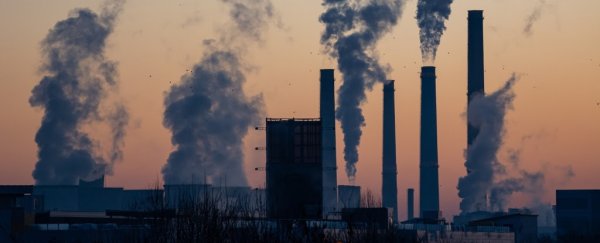Two separate studies - one focusing on the US and one on Europe - have found a worrying link between the severity of air pollution in a given area and the risk of dying from COVID-19.
These preliminary results could help to explain why some areas in the world have significantly higher rates of mortality in the current pandemic, indicating yet another reason for the need to cut down worldwide air pollution.
The first study - currently available as a pre-print by researchers at Harvard University - collected air quality data from 3,000 counties across the US, along with analysis on every death and confirmed case of COVID-19 in the US up until April 4.
"The results of this paper suggest that long-term exposure to air pollution increases vulnerability to experiencing the most severe COVID-19 outcomes," the team writes in the paper.
"We found statistically significant evidence that an increase of 1 g/m3 in long-term PM2.5 exposure is associated with a 15 percent increase in the COVID-19 mortality rate."
These long-term levels of PM2.5 refer to microscopic particulate matter in the air with a diameter of less than 2.5 micrometres. This type of particulate forms via burning fossil fuels, and is already linked to excessive rates of premature deaths due to heart attack, lung problems, and cancer.
The Harvard team has now established that COVID-19 also seems to be right at home in locations with higher long-term PM2.5 levels. The researchers accounted for population size, the number of hospital beds in an area, and a large number of other socioeconomic variables that could have skewed the results.
These are pretty damning findings on their own, but they don't stand alone. A similar study has now been published by geoscientist Yaron Ogen from the Martin Luther University of Halle-Wittenberg in Germany.
He found that another type of air pollution, nitrogen dioxide, was also linked to higher COVID-19 death rates. Ogen looked at satellite data from Sentinel 5P to map the distribution of nitrogen dioxide across Europe in the months leading up to the pandemic, and charted the number of COVID-19 deaths from 66 regions in Spain, Italy, France and Germany up until March 19.
Nitrogen dioxide is a gas mainly emitted by cars, trucks, power plants and some industrial plants; its emissions have been dropping quite significantly across the world as COVID-19 has spread, triggering lockdowns.
"Results show that out of the 4,443 fatality cases, 3,487 (78 percent) were in five regions located in north Italy and central Spain. Additionally, the same five regions show the highest nitrogen dioxide concentrations combined with downwards airflow which prevent an efficient dispersion of air pollution," Ogen writes in his published paper.
"These results indicate that the long-term exposure to this pollutant may be one of the most important contributors to fatality caused by the COVID-19 virus in these regions and maybe across the whole world."
Both studies had some limitations, too. The Harvard researchers acknowledge they were unable to account for the differences that availability of medical resources likely had on death rates, due to a lack of data. And Ogen's study doesn't adjust for age distribution or pre-existing conditions – something that the US paper did take into account.
We'll need more research on both nitrogen dioxide and PM2.5 exposure to nail down the exact relationship of air pollution levels and COVID-19 mortality, but these preliminary results give us a look into how seemingly small air quality changes might be causing large differences in lives lost.
We already know that lowering air pollution can only be good for our health, and this is yet another reminder of this fact.
"The study results underscore the importance of continuing to enforce existing air pollution regulations to protect human health both during and after the COVID-19 crisis," write the Harvard researchers.
The US paper has been submitted to The New England Journal of Medicine and can be read in full here. The European paper has been published in the Science of The Total Environment.
